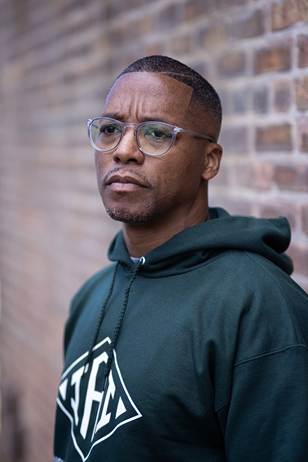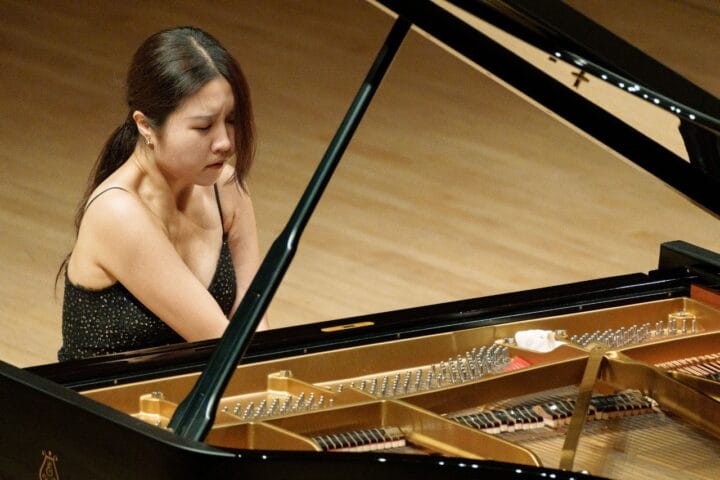Cambridge, MA – Lupe Fiasco is set to perform a concert at MIT’s Kresge Auditorium with the MIT Festival Jazz Ensemble. The performance will take place on May 2nd and will conclude MIT’s Artfinity festival. The Artfinity festival, which began on February 15th, is a celebration of creativity and community at MIT, featuring both performing and visual arts. All 80 Artfinity events, including Lupe Fiasco’s upcoming concert, are free and open to the public.
Lupe Fiasco’s MIT concert is part of his art project, “GHOTIING MIT: Public Art.” This project transforms public art into a sonic experience, merging rap and visual art. The rapper recorded nine new songs for the project, under the guidance of the MIT List Visual Arts Center. Each song draws inspiration from a different piece of art on MIT’s campus. Fiasco recorded each piece at the artwork’s location, incorporating field sounds and creating lyrics that respond to the environment. Six of these songs will be performed at the MIT concert, along with selections from his catalog. The project will also be available as a free public art tour via the MIT List Visual Arts Center digital guide. Visitors can scan a QR code to listen to Fiasco’s rhymes on their phones as they explore the campus and its public art.
Lupe Fiasco has been a presence in the rap world for over two decades. In 2024, he released the album Samurai, which received acclaim for its lyricism and concept. His 2022 album, DRILL MUSIC IN ZION, was also praised by publications such as NPR, Complex, and The FADER. Fiasco is also a visiting professor at MIT, where he teaches “Rap Theory and Practice.” He is involved in community organizations, including We Are M.U.R.A.L, The Neighborhood Start-Up Fund, Society of Spoken Art, and Studio SV. His song “Pound For Pound” is the theme song for the video game Undisputed.

“GHOTIING MIT: Public Art” is a collaboration between Lupe Fiasco and the MIT List Visual Arts Center. It explores the relationship between rap and MIT’s public art collection. Fiasco’s on-site composition and recording engages with the campus’s sculptures, murals, and installations, using their forms, histories, and surroundings as creative catalysts. The project captures ambient sounds and creates lyrics that respond to each piece, transforming public art into a sonic experience.
“GHOTIING” is described as an innovative approach to rap creation, integrating field recording and En Plein Air composition. This method, developed by Fiasco at MIT, encourages rappers to compose and record in real-world environments. By working in outdoor and public spaces, artists engage with their surroundings, allowing ambient sounds, atmosphere, and social context to influence their lyrics, flow, and delivery. The process involves capturing environmental noise and spontaneous interactions, which can be used as sonic textures or conceptual inspiration.
Similar to En Plein Air painters, “GHOTIING” encourages rappers to respond spontaneously to their environment, adapting their creative process to the unique energy of each space. This approach fosters improvisation, a connection to place, and an understanding of how setting influences artistic expression. The result is a more organic form of rap that combines soundscape, lyricism, and lived experience.
Inspired by fishing expeditions, “GHOTIING” reimagines rap creation as a search for ideas, with beats as bait, microphones as fishing rods, and the environment and the artist’s mind as the body of water. By immersing themselves in different environments, rappers seek unexpected inspiration.
Six of Fiasco’s “GHOTIING” compositions will premiere at Kresge Auditorium on Friday, May 2nd, performed by the MIT Festival Jazz Ensemble and Fiasco. The music, arranged by Kevin Costello, Matthew Michalek, and MIT Professor of Music Evan Ziporyn, will feature the 25-member ensemble.
Pieces to be performed at the concert and included in the public art tour are: “Courtyard Opps Flavor,” “Muse Flavor,” “Molecule Flavor,” “ALL CAPS FLAVOR,” “Sailing Flavor,” and “Alchemist Flavor.”
Other pieces included in the public art tour are: “3 Piece Flavor,” “The 3 Second Rule Flavor,” and “Funhouse Flavor.”
Artfinity is a festival of the arts at MIT, featuring 80 free events across the performing and visual arts. The festival began on February 15, 2025, with the opening of the Edward and Joyce Linde Music Building at MIT. It continues with a concentration of events and culminates with the Eugene McDermott Award in the Arts public lecture by Es Devlin on May 1, 2025, and the Lupe Fiasco concert on May 2, 2025.
Artfinity features the work of MIT faculty, students, staff, and alumni, along with guest artists. The 80 events include concerts, performances, visual arts, projections, films, installations, exhibitions, augmented reality experiences, lectures, and workshops. Artfinity is sponsored by MIT, organized by the Office of the Arts at MIT, with faculty leads Marcus Thompson and Azra Aksamija.
The MIT Festival Jazz Ensemble (MIT FJE) was founded in 1963 by Herb Pomeroy and has been led by Dr. Frederick Harris, Jr. since 1999. The ensemble is composed of MIT students studying various disciplines and performs traditional and contemporary jazz, including student compositions and new works by major jazz composers. MIT FJE has released five recordings, including its 2015 album Infinite Winds. The ensemble has worked with artists such as Chick Corea, Miguel Zenón, Jacob Collier, Anat Cohen, Lupe Fiasco, and others.
The Music program at MIT serves over 1,500 students each year. Over 500 student musicians participate in on-campus ensembles. Music faculty have received Grammy Awards, MacArthur and Guggenheim Fellowships, and perform worldwide. The program offers courses in music history, culture, composition, theory, music technology, and performance. A new Music Technology and Computation graduate program will begin in the fall of 2025.
The List Visual Arts Center at MIT is a contemporary art museum that presents exhibitions and programs. It also maintains MIT’s permanent art collection, commissions new works through the MIT Percent-for-Art program, and oversees the Student Loan Art Program.












